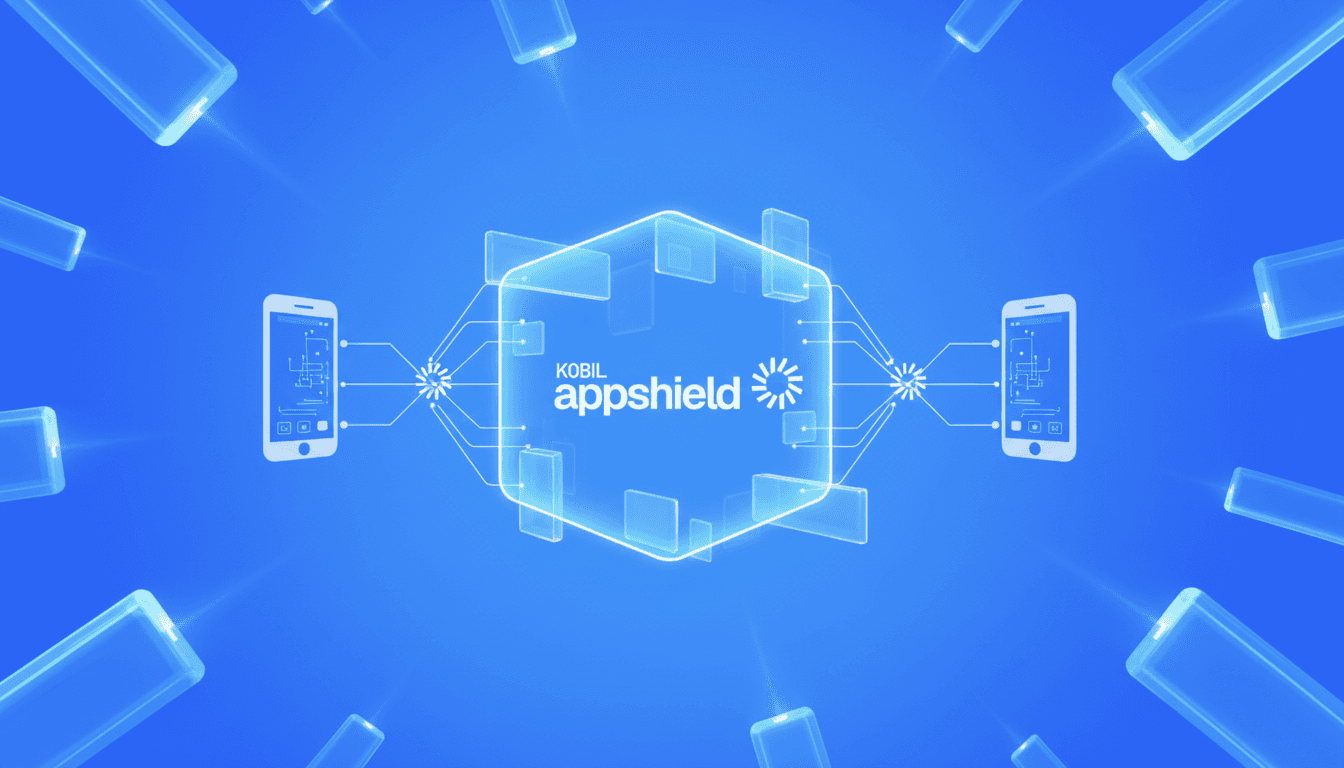SDK Integration Hell: Why Zero-Code Security is the Future
SDK integration isn't just annoying it's a 40-80 hour time sink that introduces bugs, requires maintenance, and locks you into dependencies. Discover why zero-code security is the future.
October 20, 2025

"Just add our SDK."
Four words that haunt every mobile developer who's tried to integrate third-party security tools. What sounds simple in a sales demo turns into days of configuration, debugging, version conflicts, and mysterious runtime crashes.
If you've ever spent a weekend troubleshooting why a security SDK broke your app's login flow, you know exactly what we're talking about.
Here's the uncomfortable truth: SDK integration is not simple. It's a massive time sink that introduces technical debt, creates maintenance nightmares, and often delivers less security than promised.
This is why the future of app security isn't about integrating more SDKs it's about eliminating them entirely.
Let's talk about why "just add this SDK" is actually terrible advice, and how zero-code security changes everything.
The Real Cost of SDK Integration
When security vendors say "integration is easy," they're measuring the wrong thing. They're counting the lines of code you add, not the hours you lose making it actually work.
Time: The 40-80 Hour Reality
Here's what a typical security SDK integration actually looks like:
Week 1: Setup (15-20 hours)
Read documentation (often incomplete or outdated)
Add SDK to your project (Gradle/CocoaPods configuration)
Resolve dependency conflicts with existing libraries
Configure initialization parameters
Set up API keys, certificates, permissions
Week 2: Integration (20-30 hours)
Implement SDK methods across your codebase
Handle SDK callbacks and error states
Test on multiple devices and OS versions
Debug why it crashes on Android 12 but works on Android 13
Figure out why iOS build succeeds but runtime fails
Week 3: Debugging (10-15 hours)
Discover SDK conflicts with your existing analytics tool
Fix mysterious ANR (Application Not Responding) issues
Investigate why app size increased by 8MB
Resolve ProGuard/R8 obfuscation conflicts
Deal with SDK's undocumented side effects
Week 4: Testing & Remediation (5-15 hours)
Full regression testing
Fix broken flows (login, payment, navigation)
App store compliance review (some SDKs trigger rejections)
Final adjustments and workarounds
Total: 40-80 hours of developer time (that's 1-2 weeks for one developer, or 2-4 sprints for a small team)
And that's assuming everything goes relatively smoothly.
The Hidden Costs Nobody Talks About
The integration time is just the beginning. Here are the costs that sneak up on you:
1. Ongoing Maintenance
SDKs don't stay static. Every few months:
New SDK version released
Breaking changes in API
Deprecated methods you need to update
New OS versions break compatibility
Security patches require immediate updates
Each update = another 4-8 hours of work. Multiply that by every SDK in your app.
2. Technical Debt
SDKs introduce dependencies you can't fully control:
You're locked into their architecture decisions
You inherit their bugs and limitations
You're dependent on their update cycle
Removing an SDK later is harder than adding it
Every SDK is a commitment. And commitments have consequences.
3. App Size & Performance
Most security SDKs add 5-15MB to your app size. For users on limited data plans, that matters.
Worse, poorly optimized SDKs can:
Increase app launch time (users notice delays over 2 seconds)
Drain battery life (background processes, constant checks)
Consume memory (leading to crashes on low-end devices)
You're trading security for user experience and users don't care about your security stack. They care about speed.
4. The "Black Box" Problem
Once an SDK is in your app, you're trusting it with:
Access to user data
Network requests (what is it sending?)
Device permissions (camera, location, storage)
Crash logs and analytics
You're essentially giving a third party the keys to your app. Hope they're trustworthy.
Why SDK Integration Fails So Often
Let's be honest: most developers don't want to spend weeks integrating SDKs. But we do it because we're told "that's how security works."
Except it doesn't always work. Here's what goes wrong:
Scenario 1: Dependency Hell
Your app uses:
Firebase (for analytics)
Stripe (for payments)
A security SDK (for protection)
Suddenly, you see this error during build:
Error: Duplicate class com.google.common.base.Function
The security SDK and Firebase both depend on incompatible versions of the same library. You're now stuck:
Downgrade Firebase? (Breaks analytics)
Exclude the conflicting library? (Breaks the SDK)
Spend 8 hours hunting for a workaround? (Bingo)
Scenario 2: Obfuscation Nightmares
You enable ProGuard/R8 to shrink your APK. The app builds fine. Then at runtime:
java.lang.NoSuchMethodException: SecuritySDK.initialize
The SDK's classes got obfuscated, and now critical methods are missing. You dig through documentation to find the right ProGuard rules. They're either missing, outdated, or conflict with your existing rules.
Scenario 3: The "It Works on My Machine" Classic
Your integration works perfectly on:
Your test device (Pixel 7, Android 14)
iOS Simulator (iPhone 15 Pro)
But then you get crash reports from users on:
Samsung Galaxy S10 (Android 11)
Xiaomi phones (MIUI custom ROM)
iPhone 12 (iOS 15.7)
The SDK doesn't handle edge cases. You're now debugging device-specific issues you can't reproduce.
The Zero-Code Revolution: Security Without the Pain
Here's the big question: What if you didn't need an SDK at all?
This is the philosophy behind Security Box KOBIL's zero-code security solution.
Instead of integrating libraries into your source code, Security Box works like this:
The 3-Step Workflow
Step 1: Upload Your APK/IPA
No source code needed. Just your final build file (.aab for Android, .ipa for iOS).
Step 2: Automatic Injection
Security Box analyzes your app and automatically injects pre-built security libraries at the binary level. This happens outside your codebase no code changes required.
Step 3: Download Protected App
In approximately 60 seconds, you get back a hardened version of your app with full runtime protection:
Root/jailbreak detection
Anti-debugging
Anti-code injection
Frida/Magisk detection
Anti-tampering
Screen capture protection
And 10+ other protections
No code. No integration. No maintenance.
How Zero-Code Security Actually Works
"But wait how can you add security without touching the code?"
Great question. Here's the technical breakdown:
Binary-Level Injection
Security Box doesn't modify your source code. It modifies your compiled binary.
When you upload your .aab or .ipa:
Security Box decompiles the binary (APK to DEX bytecode, IPA to Mach-O)
Injects KOBIL's pre-built security modules at specific entry points
Re-signs the app with your original certificate
Returns a fully protected binary
From the OS's perspective, the app is identical just with added security layers.
Runtime Activation
The injected security libraries activate when your app runs, not during development. This means:
No build-time configuration
No SDK initialization code
No callback handlers to implement
No version conflicts with your dependencies
The security layer is invisible to your codebase but active at runtime.
The Developer Experience: 2 Weeks vs. 10 Minutes
Let's compare two teams building the same app:
Team A: Traditional SDK Approach
Day 1-2: Add security SDK, configure Gradle/Pods
Day 3-5: Integrate SDK methods, implement callbacks
Day 6-8: Debug dependency conflicts, fix crashes
Day 9-10: Full regression testing, fix broken flows
Total time: 10 days (80 hours for one developer)
Lines of code added: 200-300
New dependencies: 1 SDK + 3-5 transitive dependencies
Technical debt: High (ongoing maintenance required)
Team B: Security Box Approach
Upload .aab to Security Box
Wait 60 seconds
Download protected app
Total time: 10 minutes
Lines of code added: 0
New dependencies: 0
Technical debt: 0 (no code changes = no maintenance)
Team B ships 10 days earlier with the same security coverage.
When You Still Need an SDK (And When You Don't)
Zero-code isn't a silver bullet for every scenario. Let's be transparent about when each approach makes sense:
Use Security Box (zero-code) if:
You want protection without touching your codebase
You're shipping fast and can't afford integration time
You're a solo developer or small team
You want to test security before committing to an SDK
Your app is already in production and you need retroactive protection
Use mShielding SDK if:
You need deep integration with custom business logic
You want fine-grained control over security policies
You're building a white-label solution
You need server-side detection (risk bit logging)
For 80% of apps, Security Box is the right choice. For the other 20% with complex requirements, you can start with Security Box and upgrade to mShielding SDK later no lock-in, no re-architecture.
The "No SDK" Advantage: What You Gain
Beyond saving time, zero-code security gives you freedom:
1. No Vendor Lock-In
With traditional SDKs, removing them is painful. You've built logic around their APIs, your codebase depends on their methods, and ripping it out means refactoring dozens of files.
With Security Box, switching security providers is trivial:
Upload your original (unprotected) build
Apply new protection
Done
Your source code never touched the security layer, so there's nothing to remove.
2. Faster Iteration
Want to test different security configurations? With SDKs, that means:
Change initialization parameters
Rebuild
Test
Repeat
With Security Box:
Upload your build once
Apply different protection profiles
Compare results instantly
No rebuild needed.
3. Cleaner Codebase
Your source code remains focused on business logic. Security is applied externally, keeping your codebase clean, readable, and maintainable.
This matters for:
Code reviews (less noise)
Onboarding new developers (fewer dependencies to explain)
Long-term maintenance (fewer moving parts)
Real Developer Testimonial: "It Just Worked"
"I spent 3 days trying to integrate a competing security SDK. Dependency conflicts, ProGuard issues, random crashes. I gave up and tried Security Box. Uploaded my APK, waited 60 seconds, and it just worked. No configuration. No debugging. No headaches. This is how security should be."
Indie developer, fintech app with 50K+ users
The Bottom Line: Security Shouldn't Slow You Down
SDK integration hell exists because we've accepted it as normal. But it's not normal it's a relic of a slower era.
In 2025, you shouldn't need to:
Sacrifice weeks of dev time to add security
Maintain SDKs across OS updates
Debug dependency conflicts at 2 AM
Choose between shipping fast and shipping secure
Zero-code security proves you can have both.
Upload your app. Wait 60 seconds. Ship with confidence.
Your First Scan Is On Us
No credit card. No commitment. No surprises.
See exactly what protections Security Box adds to your app without changing a single line of code.




